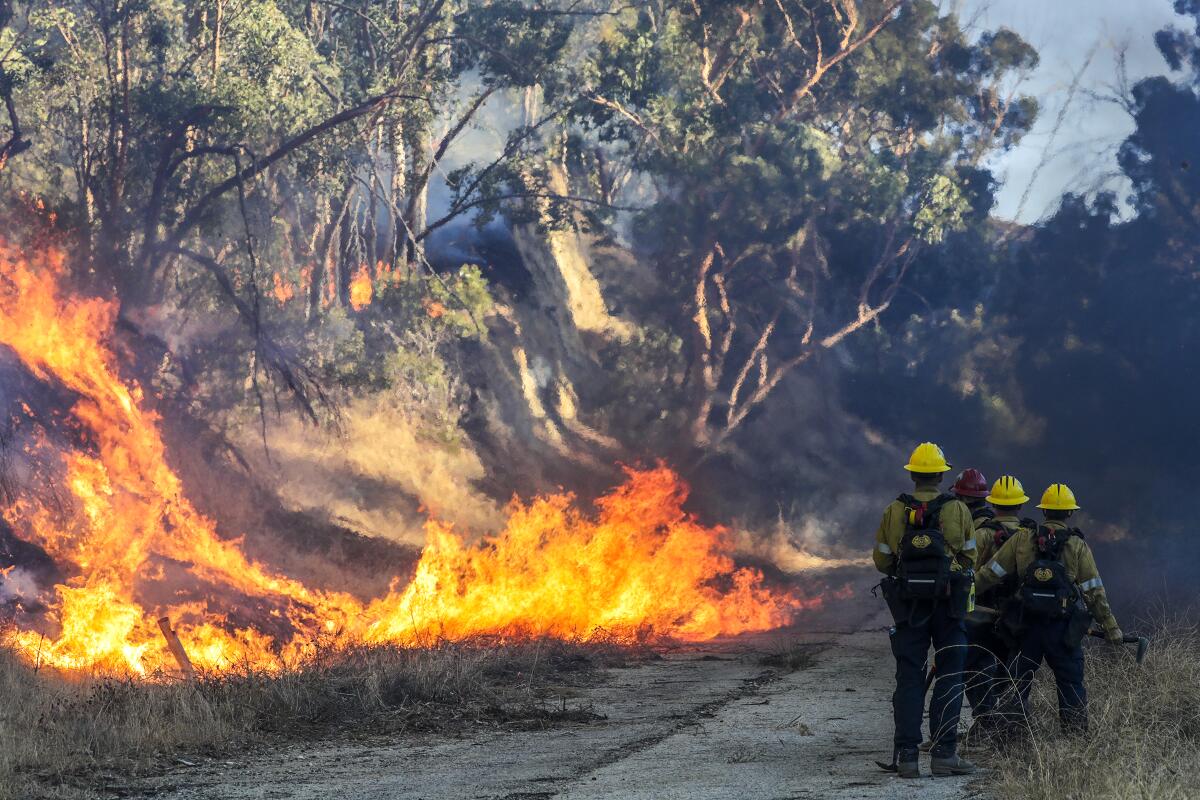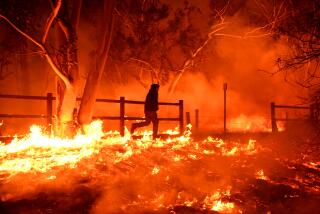Were California’s power outages worth it?

- Share via
Last year, state officials changed the law to allow power companies to be more aggressive shutting down electrical lines in areas where strong, dry winds were predicted so that even if they were downed, they wouldn’t spark a fire. The idea was that the outages would be used only as a last resort and that, ultimately, a little bit of pain and inconvenience was worth avoiding another deadly wildfire. Nearly all the deadliest fires over the last 20 years have been blamed on electrical lines and equipment.
The state’s two largest utilities — Pacific Gas & Electric and Southern California Edison — employed that preventive move in a big way last week, plunging millions of people into the dark from Humboldt to Ventura counties, bungling communications with the public and prompting questions about whether the weather in the end had justified such an extreme reaction. The PG&E shutdowns were staggeringly broad in scope, affecting hundreds of hospitals, thousands of homebound ill and infirm Californians, and hundreds of thousands of students whose schools were temporarily closed. All this by a company that has lagged badly on its tree-trimming efforts and other fire safety programs.
Now that the winds have died down, state officials should hold utilities executives to account for answers. Gov. Gavin Newsom on Monday asked the Public Utilities Commission to undertake an immediate review of PG&E’s outage of 738,000 customers. And it should do so, ideally, before the Santa Ana and Diablo winds return.
The review should include Edison’s outages as well. Edison was much less aggressive, shutting down power to only 24,113 customers at the peak, but the outages were still disruptive.
Among the questions that need answering is why the power was cut to some communities and not others. We know that shutting down power lines has ripple effects, but without explanation, the outages felt random. Also, why were the utilities not better prepared to communicate with customers about what was coming? Edison and PG&E had been working with the PUC for more than a year to hammer out rules governing “public safety power shutdowns.” Yet last week, both had website problems when customers logged on to find out if they were on the outage list. Honestly, these two utilities collectively serve most of California. How could they not have foreseen this demand for information?
But the most important question to be answered is whether the outages accomplished anything. PG&E’s equipment didn’t start any fires last week, but that might have been the case even if the lights had stayed on. Meanwhile, thousands of Southern Californians had their power cut, but the power continued to flow through lines at the ignition point of the Saddleridge fire near Sylmar. It’s still too early to say if those live wires caused the fire, but Edison reported that they were malfunctioning.
Newsom has called on PG&E to offer a $100 credit to residential customers and $250 to businesses left in the dark last week. That’s a nice gesture, but we think it would be even better if people could feel confident that the pre-emptive blackouts were actually making people safer.
More to Read
A cure for the common opinion
Get thought-provoking perspectives with our weekly newsletter.
You may occasionally receive promotional content from the Los Angeles Times.









